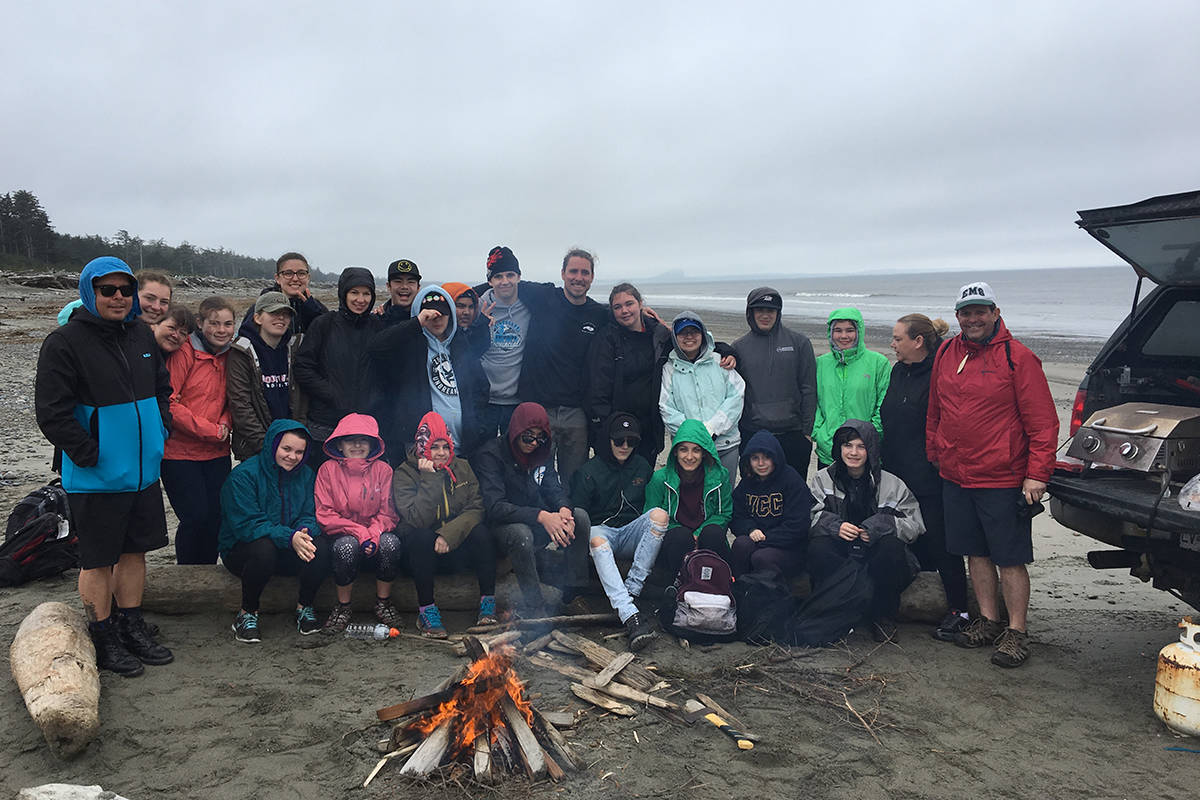With a map of Haida Gwaii laid across a table at Earl Marriott Secondary Wednesday morning, three Indigenous students shared appreciation of their culture after returning home from an eight-day trip to the northwestern B.C. island.
Organized by EMS teacher Michael Mackay-Dunn, and Aboriginal child and youth care worker Dawne Kalenuik, in partnership with Semiahmoo First Nation, the student trip toured several sacred sites while mingling with students from Tlaats’gaa Naay Secondary, located in Masset.
Grade 11 student Regan Malcolm, of Gitxsan First Nation heritage (near Prince Rupert), said one of the most moving parts of the adventure was visiting Rose Spit, known as the birth place of the Haida people and other First Nations across the northwest.
Malcolm said hiking to the park, located on the northeastern point of the island, was a special moment.
“In my culture, it’s also where we all come from… it truly is a birth place, it’s an incredible place to be,” Malcolm told Peace Arch News Wednesday. “It’s where man first emerged from a giant clam. I don’t know the whole story, that’s just the story that I know.”
EMS teachers accompanied the 18 Indigenous students, as well as Surrey RCMP Const. Troy Derrick, who’s also from Gitxsan First Nation.
Malcolm said it’s a challenge finding representation of her nation, but was grateful Derrick, as well as another student from Gitxsan, was able to share the experience.
Gitxsan and Haida people would cross the sea for trading purposes, Malcolm added.
“Just being surrounded by that community was really nice. It made me miss Prince Rupert and the area I come from, it also makes me wish we do more of an Aboriginal program here. There’s more that can be done. I just want the Aboriginal students here, and the non-Aboriginal students here, to be passionate about the land that they live on and where it comes from, and where the people on it come from.”
Grade 10 student Domenik Couture, who is of Metis heritage but has little knowledge of his ancestral roots, said it was his first time being submerged in the Indigenous culture.
Prior to 1862, the island reportedly had anywhere from 35,000-40,000 residents, before European people made contact. Once contact was made, smallpox nearly wiped out the island, killing everyone except 400 residents.
Today, approximately 4,700 people call the island home. The Indigenous people of the island placed the bodies of their loved ones inside mortuary posts. Standing upright, the body would eventually be reclaimed by nature. Some of the posts were taken from the island and sold to museums. Mackay-Dunn said museum officials did not know that there were bodies inside the mortuary posts.
“And to know that they’re still working on getting the bodies back, it makes me a little mad to know that people would do that. Take bodies and put them in museums like art? It makes me upset,” Couture said.
The group visited a cemetery, and Couture said it was proof that nature reclaims the deceased.
“Moss growing over the graves, it shows that the earth is reclaiming the body. It’s reclaiming that person into the earth,” Couture said.
Grade 8 student Isabelle Gould, who has lineage in the Interior Salish, said the trip gave her a new perspective.
“I’ve learned a lot about the culture and how they lived, and how important a lot of things are to them that we don’t usually think about, for instance the (Golden Spruce tree). We normally wouldn’t think of a tree like that, it’s a tree. And how important some of the land is to them and protected areas. We were really fortunate to go to some of the islands. The totem poles they raised were stunning.”
Kiidk’yaas, also known as the Golden Spruce, was a sitka spruce tree that grew on the Yakoun River on Haida Gwaii. Known for its vibrant, glowing gold appearance, it was cut down in 1997 by Grant Hadwin. Hadwin was to stand trial for the act, but mysteriously disappeared.
Malcolm said the tree was believed to be the spirit of a child from Haida Gwaii, and the people held a service to honour the tree.
“To them, the Golden Spruce was a little boy, it had a spirit. It was very special, that’s why it was so devastating when it was cut down.”
